One of the first things that come to mind when planning flower arrangements or bouquets is the COLOR. It’s one of the fundamental elements of any type of design, as important as Form (shape of the flowers and the overall arrangement) and Texture (from smooth and sleek to ornate and airy.) (More on those later!) There are lots of different ways to combine colors that you might have never considered that can really set your floral arrangements and wedding flowers apart! First, a quick primer on Color. Color has three components: Hue (what most of us think of when we say “color”), Value (from light to dark of a given color), and Saturation (the intensity – vibrant or soft/muted — of a given color). Today we’re going to focus on Hue. Any of us who have made it through Kindergarten have seen a color wheel (ok, maybe not the flower version!) …and there you have your basic hues: Yellow, Yellow-Orange, Orange, Red-Orange, Red, Red-Violet, Violet (Purple), Blue-Violet, Blue, Blue-Green, Green, Yell0w-Green. To begin experimenting with your flower arrangements, start working the Flower Color Wheel.

BloomsByTheBox Flower Color Wheel
Using Complementary Colors in Flower Arrangements
For vibrant, intense results, combine Complementary colors in your bouquets and arrangements. These appear across from each other on the color wheel: Yellow-Purple, Blue-Orange, Red-Green. When you put Complementary colors side-by-side, they tend to enhance the intensity of each other.
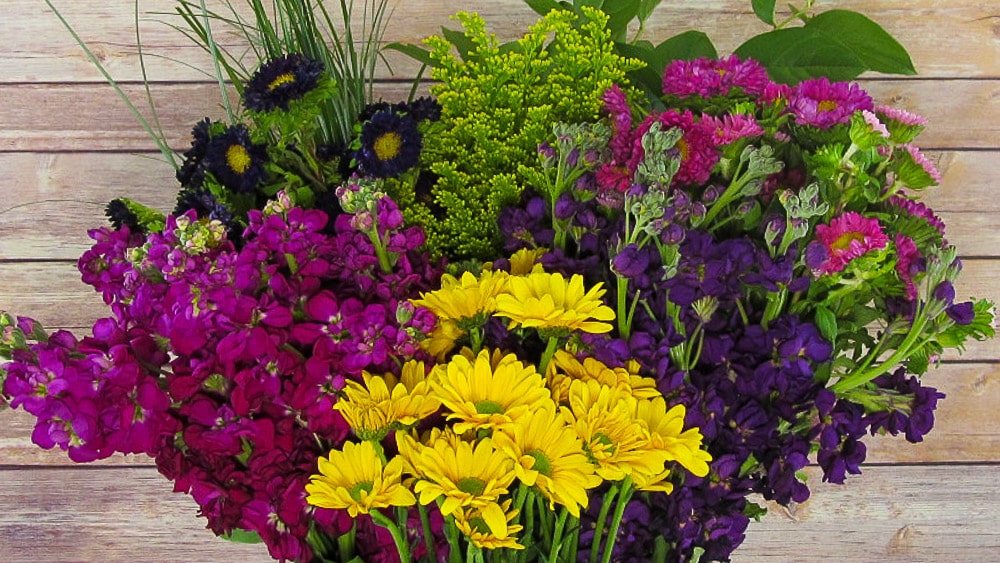
Complementary Color Flowers
Using Analagous Colors in Flower Arrangements
You can create soothing, harmonious, romantic, fresh flower combinations using Analogous colors. These are families of colors that are next to each other on the color wheel, like “Blues” (blue, blue-violet, blue-green), or “Yellows” (yellow-green, yellow, yellow-orange).
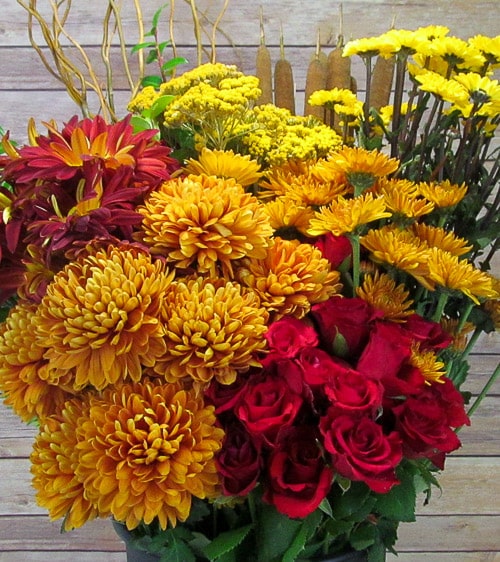
Analagous Red/Orange/Yellow Flowers
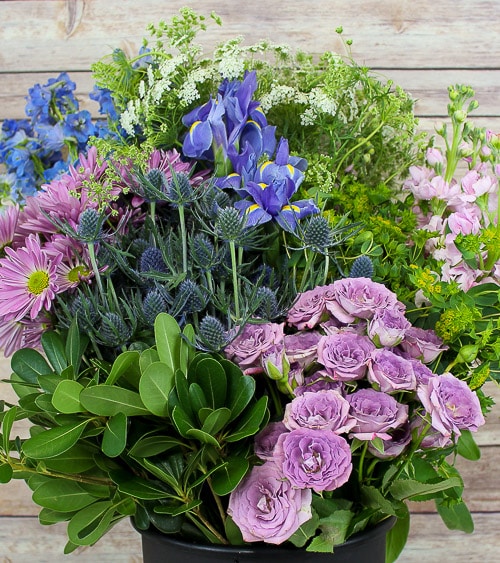
Analagous Blue Violet Flowers
Using Triadic Colors in Flower Arrangements
You can also create unusual, exciting combinations using Triadic colors, basing your flower choices on three colors that are equidistant from one another on the color wheel. Think yellow/red/blue, or purple/green/orange, or blue-green/yellow-orange/red-violet.
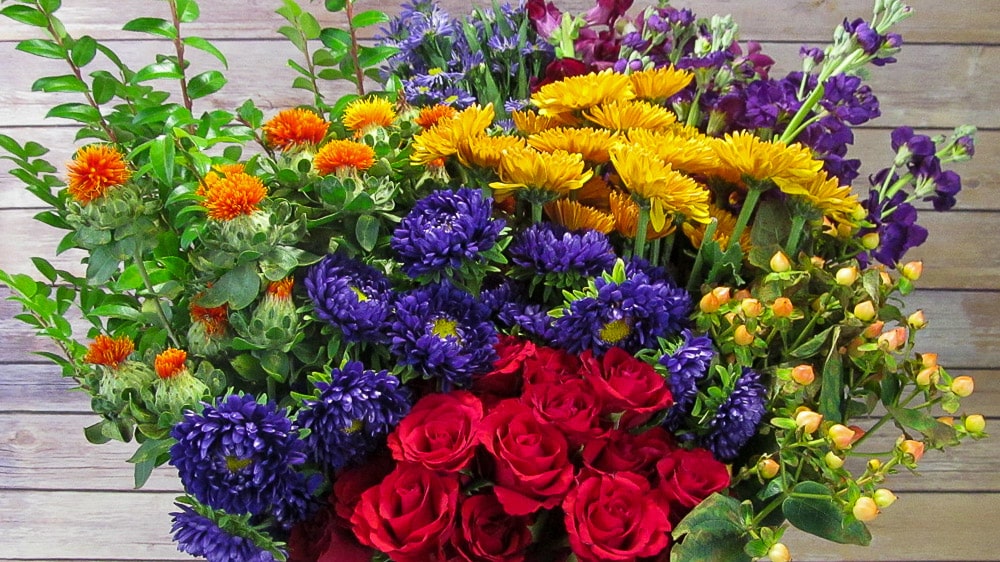
Triadic Color Flowers
Of course, this is just the beginning. As you get more comfortable working with different harmonies, start experimenting with Value and Saturation. (We’ll look at those a little more closely in a later post.) You’ll start to see combinations that work and don’t work, and will begin to see how following some basic design guidelines using flower color wheel can lead you to beautiful success in floral design.
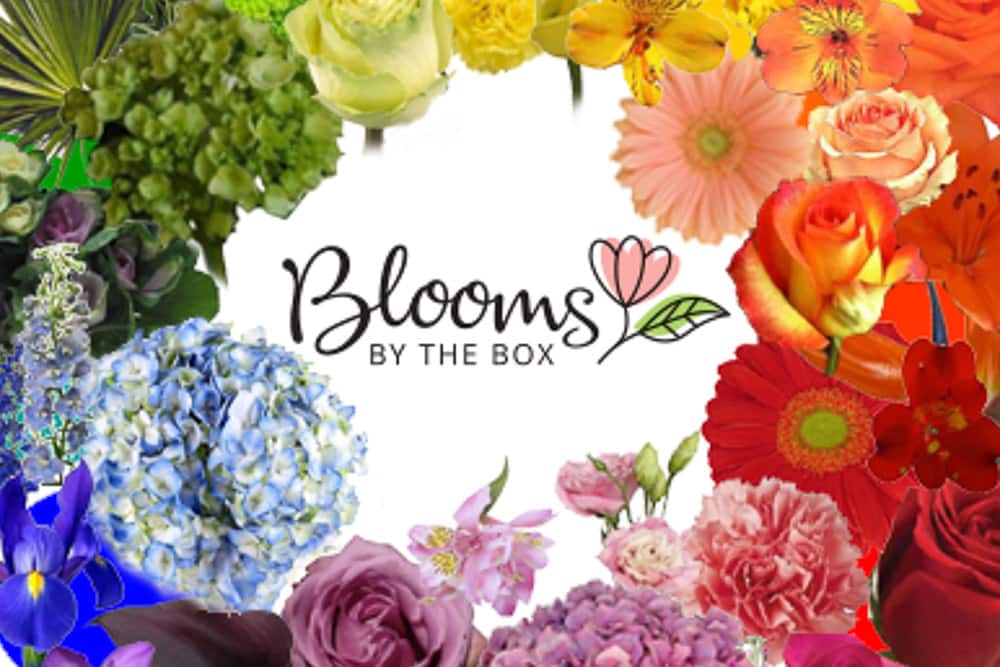
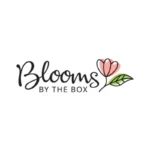

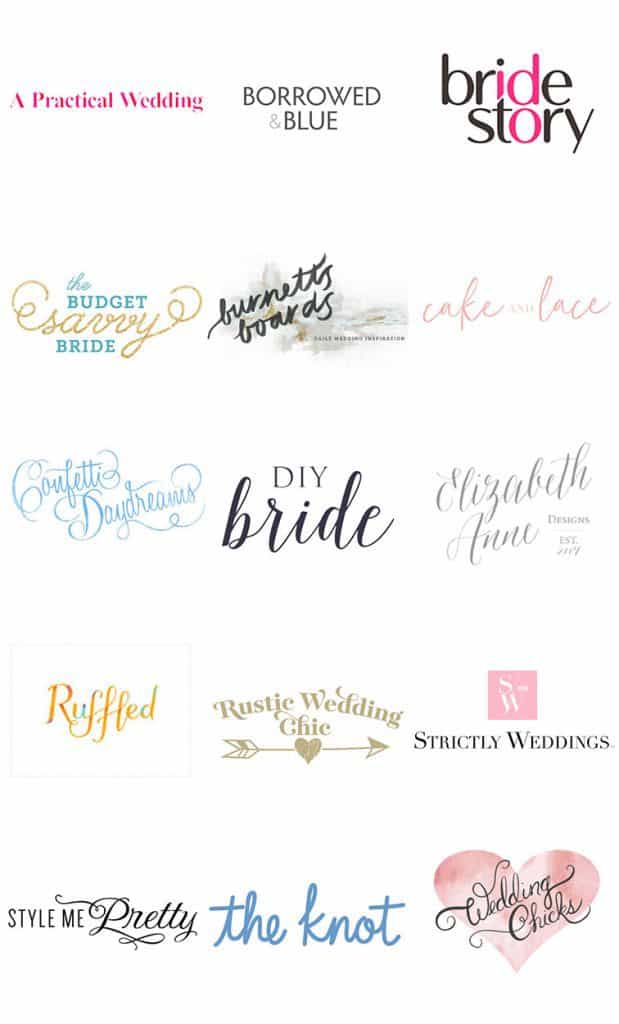
This is such a great tool! Thanks so much for the advice-it’s so easy to get overwhelmed with color inspiration- ack!! But you put it into perspective and easy to understand, thanks!
Just curious… maybe a dumb question but where does white fall on the color wheel?
Simple question, complicated answer.
There are two categories of color: Pigment and Light. And they treat black and white oppositely (is that a word??).
In video (light color — say, if you’re a techno-bob who might know the call letters to the Starship Enterpise 🙂 ), white is the combination of all color, and black is the absence of color.
In pigment (for the more artsy-types) — paint, dye…flowers — black would be all color (mix all colors together, you get something close), and white would be…none.
A color wheel, by design, deals only with hues – the rainbow of all colors in a ring. It doesn’t address the convergence or combination of color, which is what you’d need for white or black.
But we have a post coming up about saturation and value…and value is where white, at least in layman’s terms, comes into play. So maybe that will help!
Oh… a little techie/nerd dig there, huh? 😉
The reason I asked was because Sarah made an arrangement the other day that looked like a triadic color combination. She used lavender lace-capped hydrangea with smallish yellow-orange sunflowers. Combined with the deep green leaves from both the hydrangea and sunflowers, she hit three colors equidistant on the color wheel.
The thing is, she also used white daisies (maybe asters?) in the arrangement. It looked very nice and when I reread this post, I didn’t see any mention of white (or black).
It’s hard trying to wrap my techie brain around these artsy design ideas but I’m trying. Very informative and interesting… looking forward to upcoming posts. Thanks!
What do you think about white colour? I read that can destroy all visual effect of flower arragment.
i learn a lot, good job
I must say I really love your style, your sense a cretviaity and your passion! This all really comes through your pictures. I will never forget coming across your work a few years ago I knew from then that you had such a talent. I am glad to see how our two companies have gained momentum together and I look forward to working with you again this year! I will be meeting with a client you are working with this week! All the best for a great new year!Kristy Giardino800-903-5713
Your so sweet! Thank you so much for all the encouragement! Please let us know if you ever need any help! I am so glad your business is growing too! It has been good for us especially the past year!
This iss my first time go tto see at here and i am genuinly
pleassant to reqd evertghing at alone place.
It is really great articles! Hope to read more ?
Thank you for the kind words! Stay tuned for more great blog posts!
Thanks for sharing these tips. It is very useful 🙂
Thank you for the kind words!